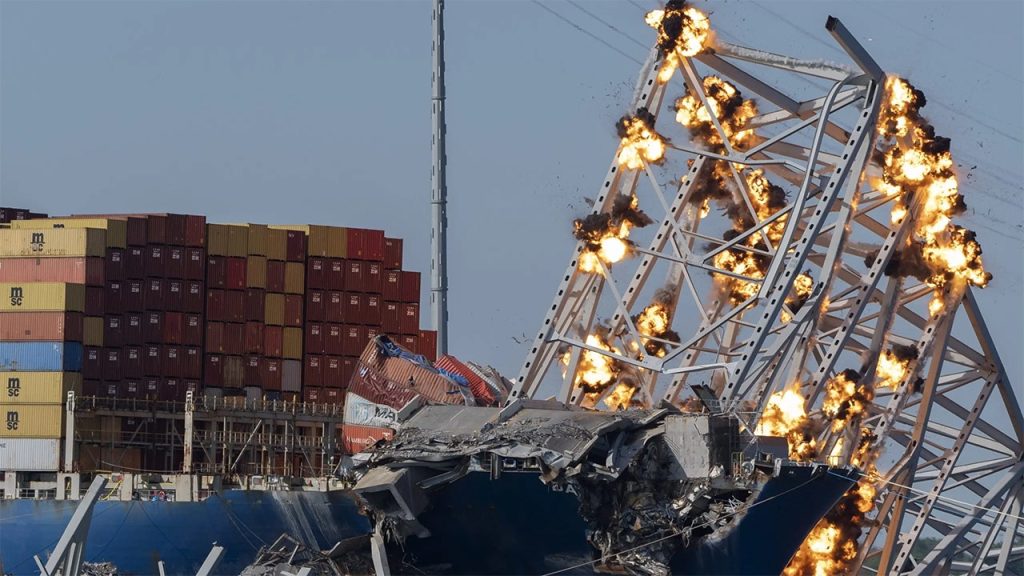A Singapore-flagged cargo ship, the Dali, crashed into the Francis Scott Key Bridge in Baltimore in late March, causing it to collapse. A preliminary report from the National Transportation Safety Board (NTSB) revealed that a crewmember’s mistake caused the blackout a day before the crash. The crewmember accidentally disabled the vessel’s equipment during in-port maintenance, leading to a blackout due to insufficient fuel pressure for the online generator. The report also mentioned that a primary electrical breaker tripped just over half a mile from the bridge, causing the ship to lose power and eventually crash into the bridge. The main propulsion diesel engine shut down after the pumps lost electrical power.
Following the crash, the ship’s crew restored power and called for assistance from tug boats. However, a second blackout occurred, resulting in the ship striking a main support pier on the bridge, causing it to collapse within seconds. Although the ship issued a mayday alert, there was not enough time to save the bridge workers who fell to their deaths. As a result, the FBI has launched a criminal investigation into the circumstances leading up to the collapse. Investigators have boarded the ship to document the scene, collect evidence, interview the captain and crew members, and review policies, training practices, and other factors that could be relevant.
The collapse of the Francis Scott Key Bridge also led to a controlled demolition to break down the largest remaining span of the bridge, which was a major step in freeing the grounded Dali container ship. The NTSB stated that a full investigation could take a year or more to complete, as the preliminary report likely only scratches the surface of the findings that will be presented in the final report. The investigation will also include a review of the design, engineering, and condition of the bridge. This incident has raised concerns about the safety protocols and practices aboard cargo ships and the potential dangers of such accidents.
The incident has sparked questions about the maintenance and operational procedures on cargo ships and the significant consequences such accidents can have. The devastating collapse of the bridge and the resulting casualties have highlighted the importance of proper training, maintenance, and adherence to safety protocols in the maritime industry. The NTSB’s investigation will shed light on the series of events leading up to the crash, and the findings will likely result in recommendations for improved safety measures to prevent similar incidents in the future. The tragedy underscores the need for stringent safety regulations and oversight in the transportation industry to avoid catastrophic accidents that can result in loss of life and significant damage to infrastructure.
The collapse of the Francis Scott Key Bridge has had far-reaching implications not only in terms of infrastructure damage and casualties but also in the investigation and response to the incident. The NTSB’s preliminary report has provided some insight into the events leading up to the crash, but a full investigation is still underway to determine the root causes and contributing factors. The criminal investigation launched by the FBI underscores the seriousness of the incident and the need to hold those responsible for any negligence or mistakes that led to the collapse accountable. The impact of this incident will likely result in changes to regulations, safety protocols, and emergency response procedures in the maritime industry to prevent similar tragedies in the future.













